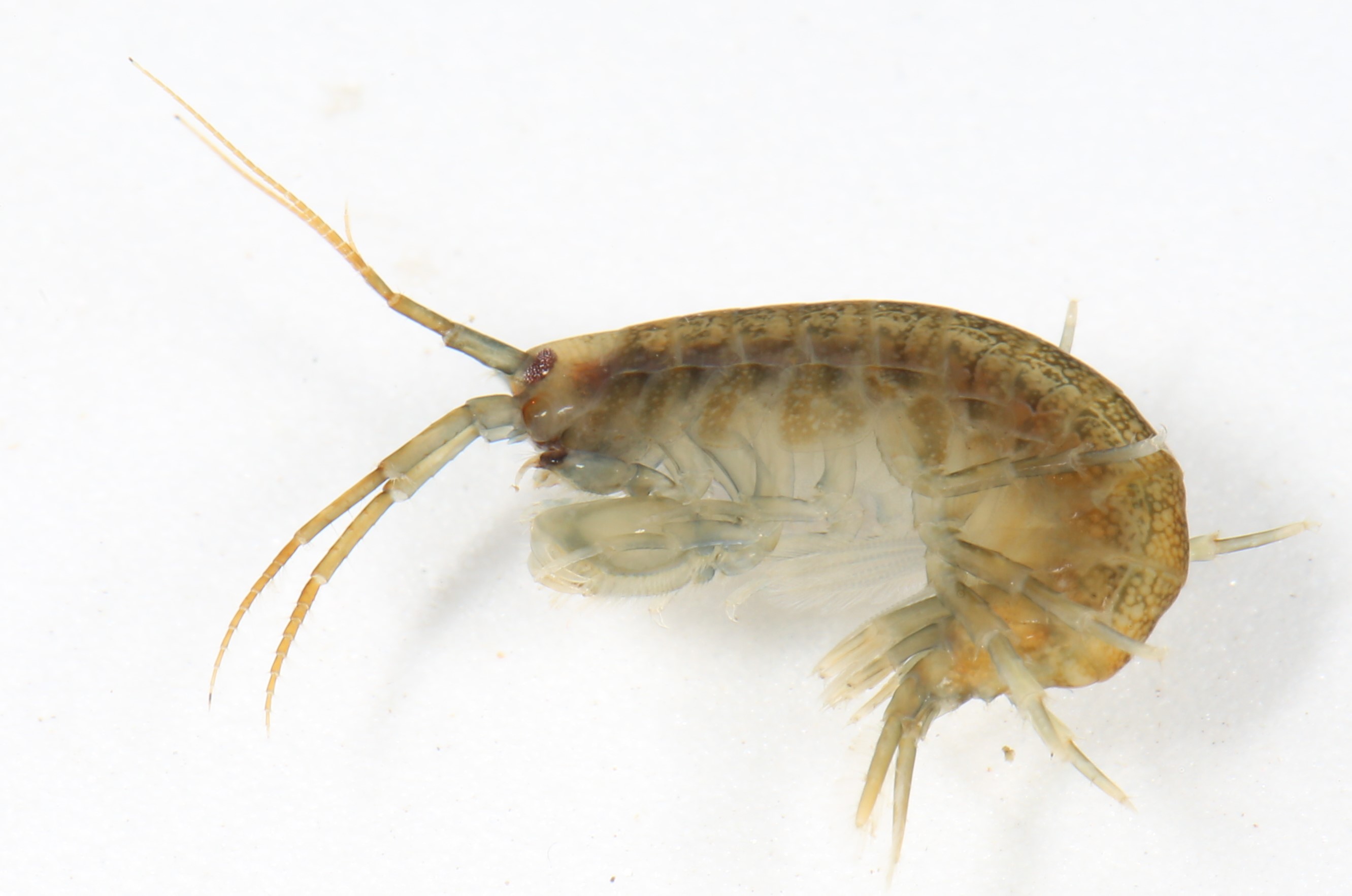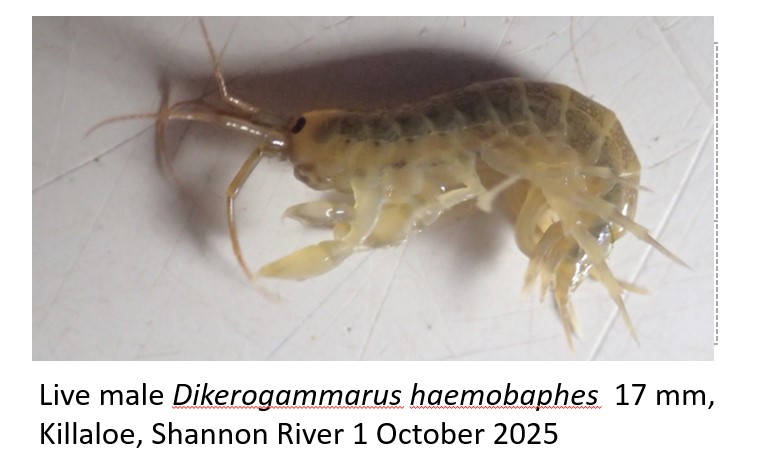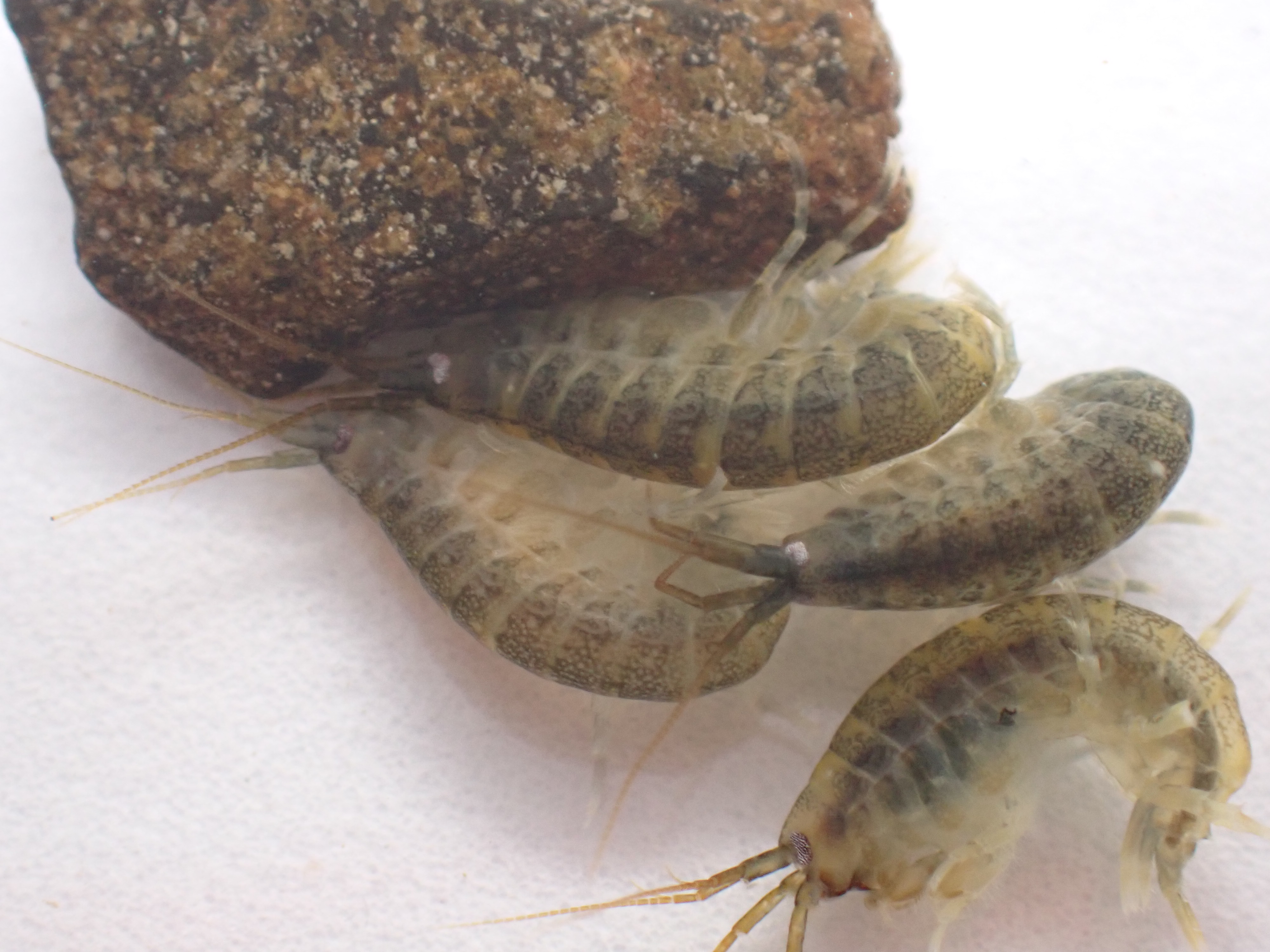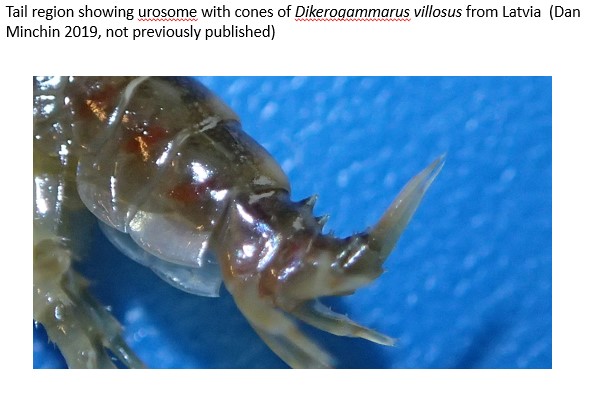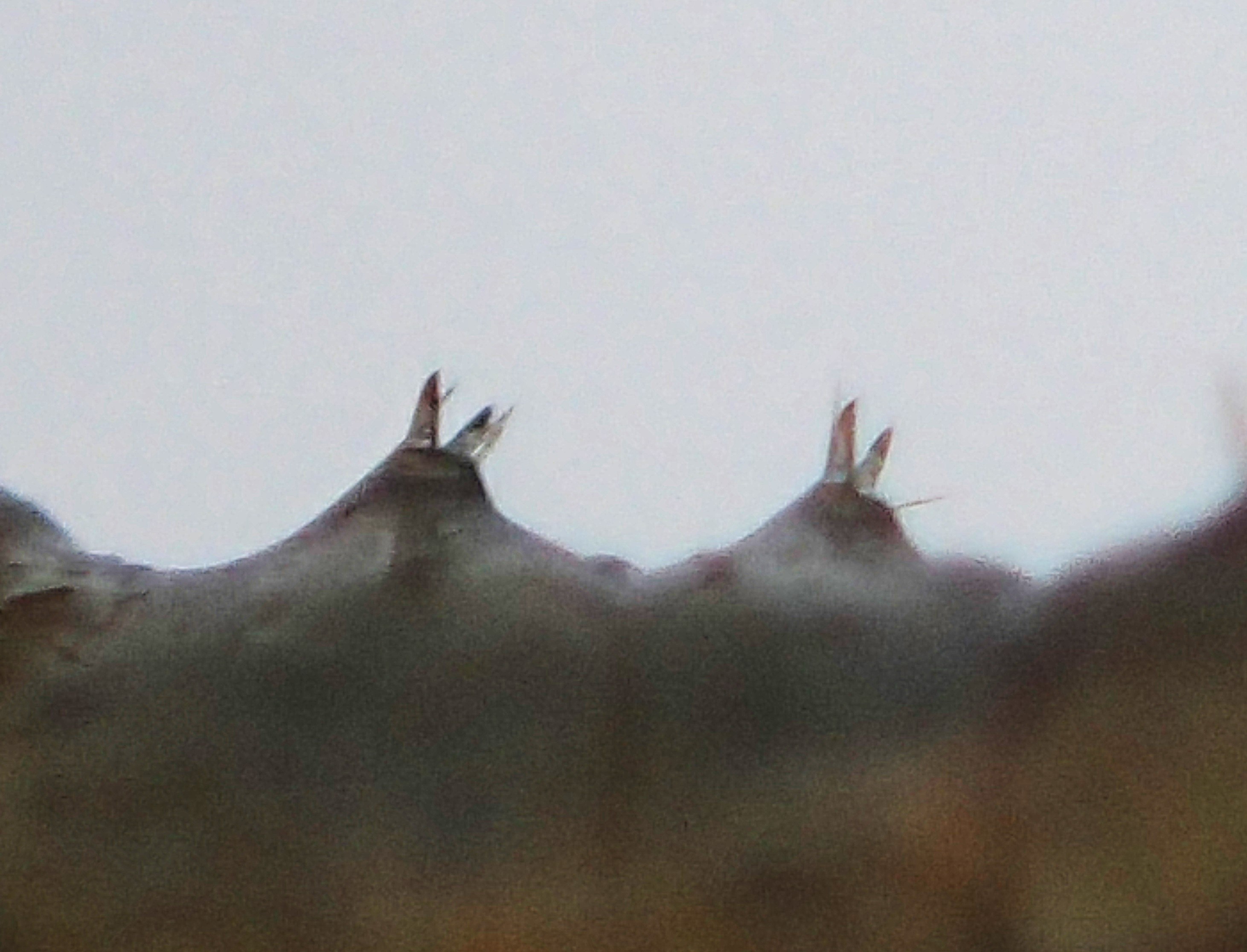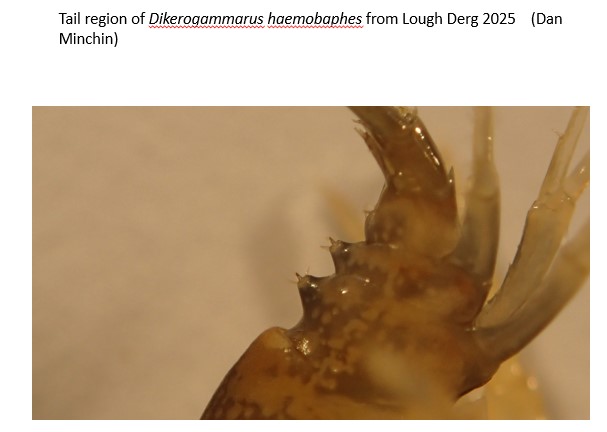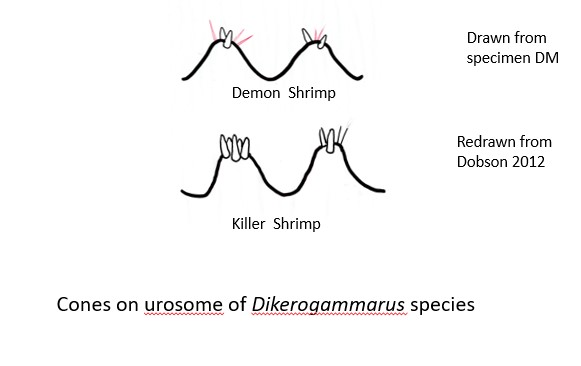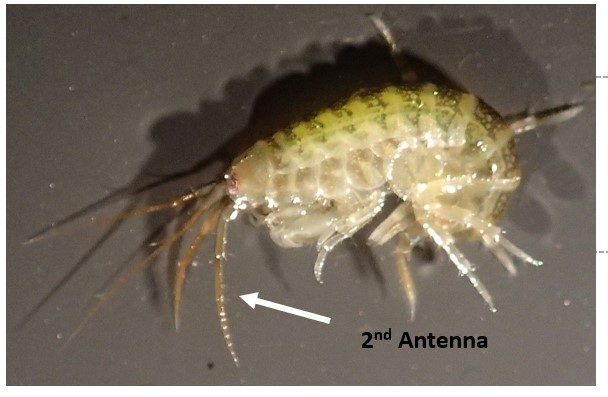Issued by: the National Biodiversity Data Centre in partnership with Waterways Ireland, the National Parks and Wildlife Service and Dr. Dan Minchin of the Lough Derg Science Group .
Reason for issue: To notify the presence in Ireland of the demon shrimp, a highly invasive amphipod.
What was seen and when: It was first recognised on 30 September 2025 in the Shannon River below Lough Derg. It was common in samples taken during the following day.
Invasive status: The demon shrimp was predicted to arrive to Ireland in a horizon scan, based on a workshop in 2017, that was published in 2020 (Lucy et al., 2020). It was listed as the eighth ranked freshwater species with a high probability of being introduced. It was not rated at the highest level for establishment due to being ascribed with a moderate impact on biodiversity. Demon shrimp was also predicated to arrive and be impacting in the D. Minchin 2014 report on Risk assessment of non-indigenous marine species, Ireland: including those expected in inland waters.
- The demon shrimp is a predator and likely to reduce native and non-native amphipod populations that are already present in Lough Derg.
- It may have an impact on other bottom fauna that include insects.
- It is tolerant of temperatures to 30˚ C and comes from a region where there are cold winters. As a result, conditions in the Lough Derg region are likely to enable its continued spread and establishment elsewhere.
- The presence of the quagga mussel has provided a habitat for this amphipod. Such is the abundance of the quagga mussel that the demon shrimp is likely to expand rapidly.
Is there a reference specimen? Yes, over fifty specimens have been lodged with the National Museum of Ireland.
Pathway of introduction.: While this is unknown, it is likely that its arrival may have been associated with small craft movements or with angling equipment.
Vectors of subsequent spread: It almost certainly will be spread downstream with current flow to the Shannon Estuary. Upriver spread is likely to take place with hull fouling of vessels, including within bow thrusters, contained within bilge and toilet water, snagged plant materials from anchors and to elsewhere with the overland transport of trailered craft. Angling equipment may well be spread with uncleaned keep nets, stink bags (in which nets are held), other forms of netting and wet-gear. It is unknown if birds or other vertebrates are capable of its spread. The demon shrimp has spread rapidly in Britain, since it first recorded there in the Severn during 2012, and may be expected to do so in Ireland.
Circumstance of discovery: As part of annual monitoring of the relative abundance of the quagga and the zebra mussel in lower Lough Derg.
Management actions taken to-date for this 2025 sighting:
- First reported at the Conchological Society of Great Britain and Ireland regional meeting, 5 October 2025 in Dungarvan, and to the National Biodiversity Centre on 7 October 2025.
- Waterways Ireland commissioned rapid assessment surveys of Lough Derg and Lough Ree to check for presence of demon shrimp
- Species Alert issued by the National Biodiversity Data Centre and partners
- Other supporting information resources are under development and will be made available on this webpage once prepared.
Where might I see it? Benthic sampling in the Killaloe region is likely to reveal its presence. Being an amphipod many of them may look the same unless you have an identification key. Dobson (2012) is the current most easily used key.
What should I do? Please be sure to clean your gear or vessel where this is possible before moving elsewhere. Follow the Check Clean Dry biosecurity code.
Comment: While this amphipod is known to have an impact on biodiversity, the related killer shrimp is considered to be a much more impacting species. It is almost certain that it can be spread in exactly the same way as the demon shrimp. Unless there are more effective management methods at ports of entry, it is inevitable that the killer shrimp, and others of concern on the horizon list, will arrive with consequences for the environment and our different economies.
Useful information:
Aldridge, D.C. (2013) GB Non-native Organism Rapid Risk Assessment for Dikerogammarus haemobaphes (Eichwald, 1841). Rapid_RA_Dikerogammarus_haemobaphes.pdf
Dobson, M. (2012) Identifying Invasive Freshwater Shrimps and Isopods. UK: Freshwater Biological Association, 30 pp.


